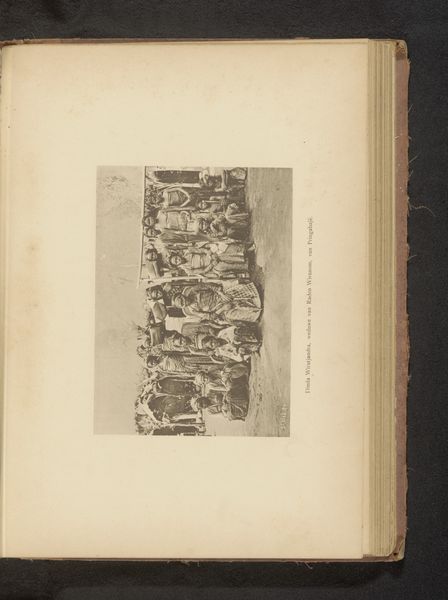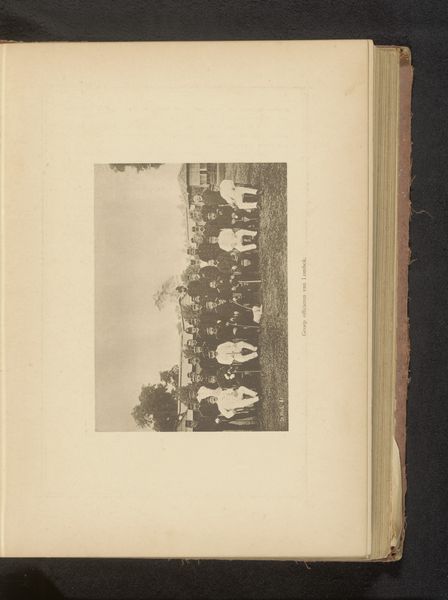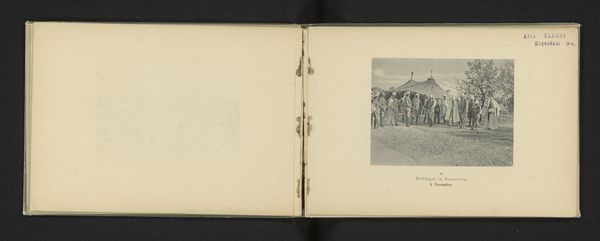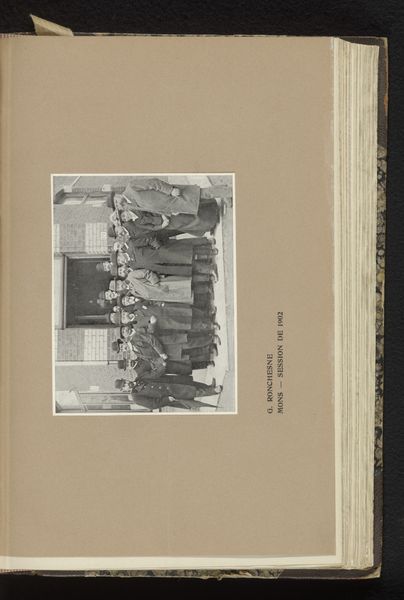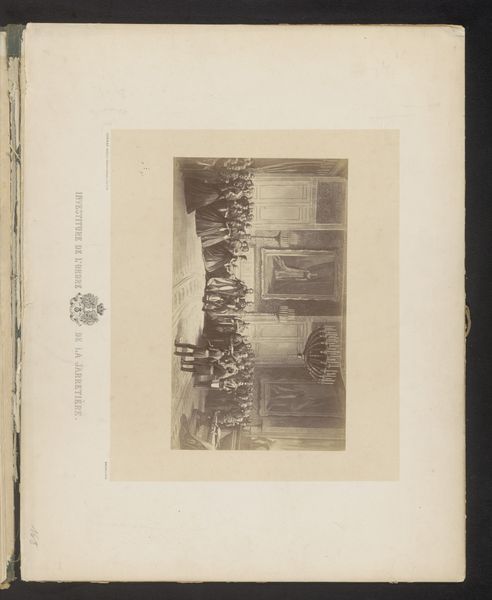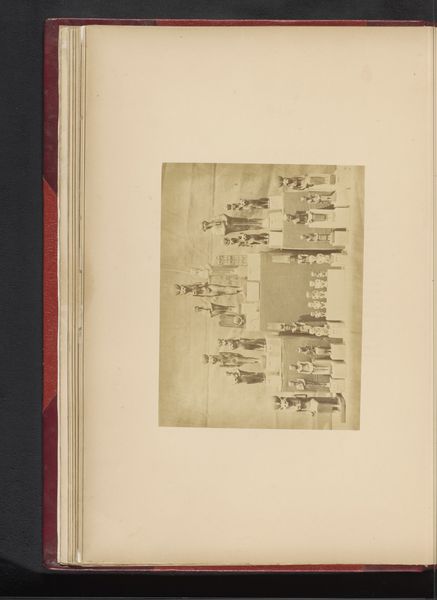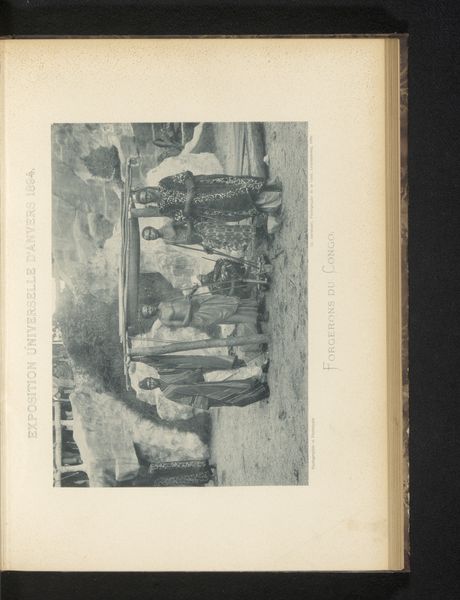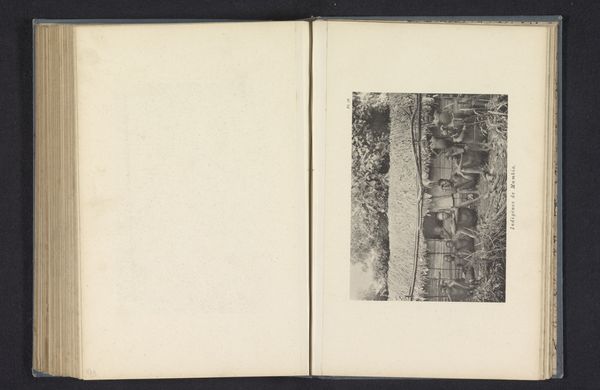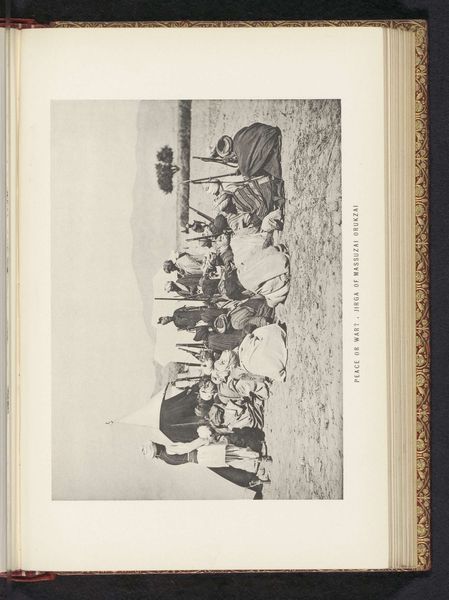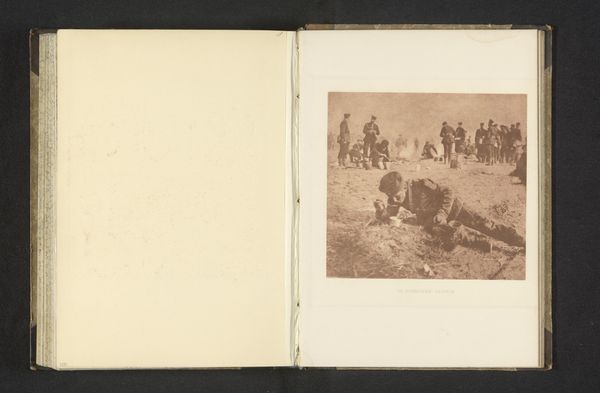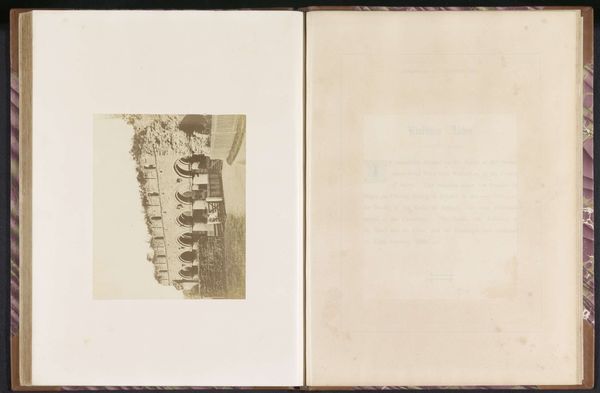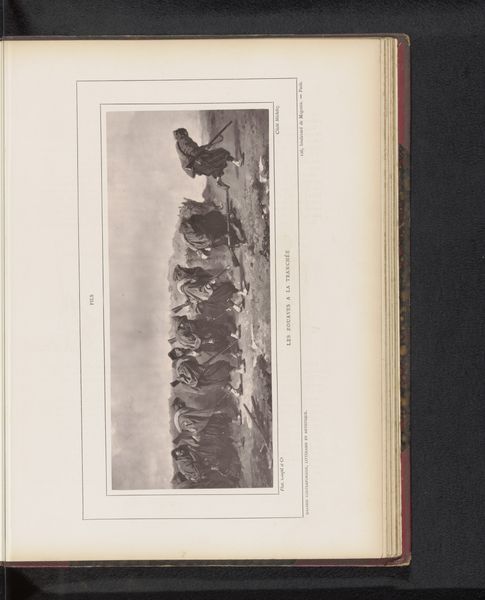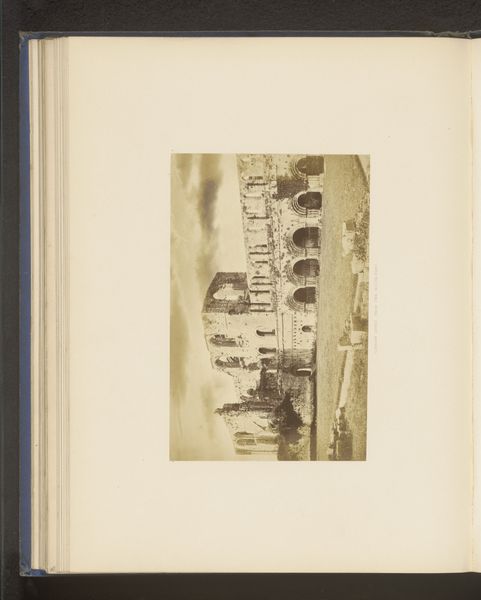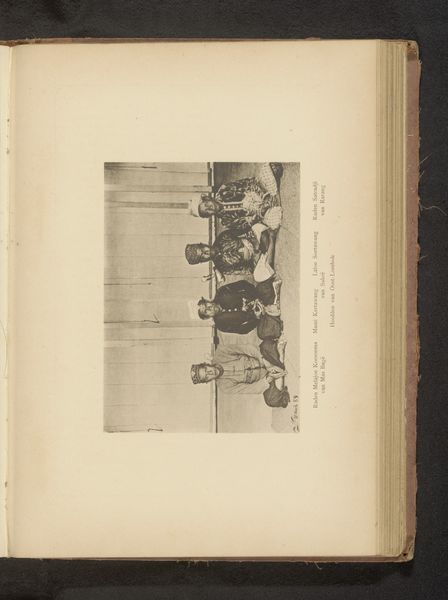
photography
#
portrait
#
aged paper
#
homemade paper
#
animal
#
paperlike
#
dog
#
sketch book
#
paper texture
#
photography
#
personal sketchbook
#
folded paper
#
sketchbook drawing
#
paper medium
#
sketchbook art
Dimensions: height 102 mm, width 194 mm
Copyright: Rijks Museum: Open Domain
Curator: This intriguing photograph, titled "Onbekende man met een roedel honden bij de keizerlijke kennel" or "Unknown man with a pack of dogs at the imperial kennel," is attributed to Furne Fils and H. Tournier and dates to before 1861. Editor: My immediate sense is one of formal rigidity. A large pack of dogs arranged neatly—almost regimentally—with a single human figure standing sentry over them. It projects authority, and a specific type of human-animal relationship. Curator: Precisely. Understanding the political role of imagery during this period is key. Photography was increasingly used by institutions—including imperial kennels—to project power, manage animal populations, and control narratives around breeding and ownership. Editor: That makes sense. The controlled environment, the standardized poses...it's all about presenting a very particular image of order and dominion. Were dog breeds often associated with class and social standing at the time? Curator: Absolutely. Certain breeds signaled aristocratic status and hunting prowess. We have to remember how deeply intertwined human identity, race, and class were with the breeding and ownership of animals, and this photo operates within those parameters. The dogs almost become extensions of the man’s power, literally a cohort lined up at his disposal. The setting suggests something institutional, possibly the kennels related to hunting estates controlled by noble families. Editor: And considering photography's own complicated role in early science and eugenics movements, I am curious if these photos were created as scientific documents with some classification or documentation function related to breed? I am stuck on this man posed formally amongst his orderly canines, an exercise in control. It evokes mixed feelings. Curator: Indeed, the historical context compels us to think critically about these images. This image reflects both social order, hierarchies of power, and the way these institutions used photography as a means of managing image and information. This photograph leaves me with a sense of responsibility, of constantly questioning power relations—even, and especially, when they appear captured simply on paper. Editor: Agreed. This certainly opens the door to crucial conversations about social structures embedded within art.
Comments
No comments
Be the first to comment and join the conversation on the ultimate creative platform.
